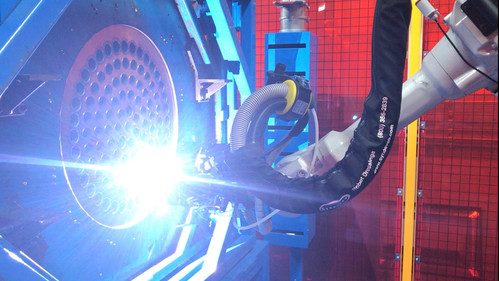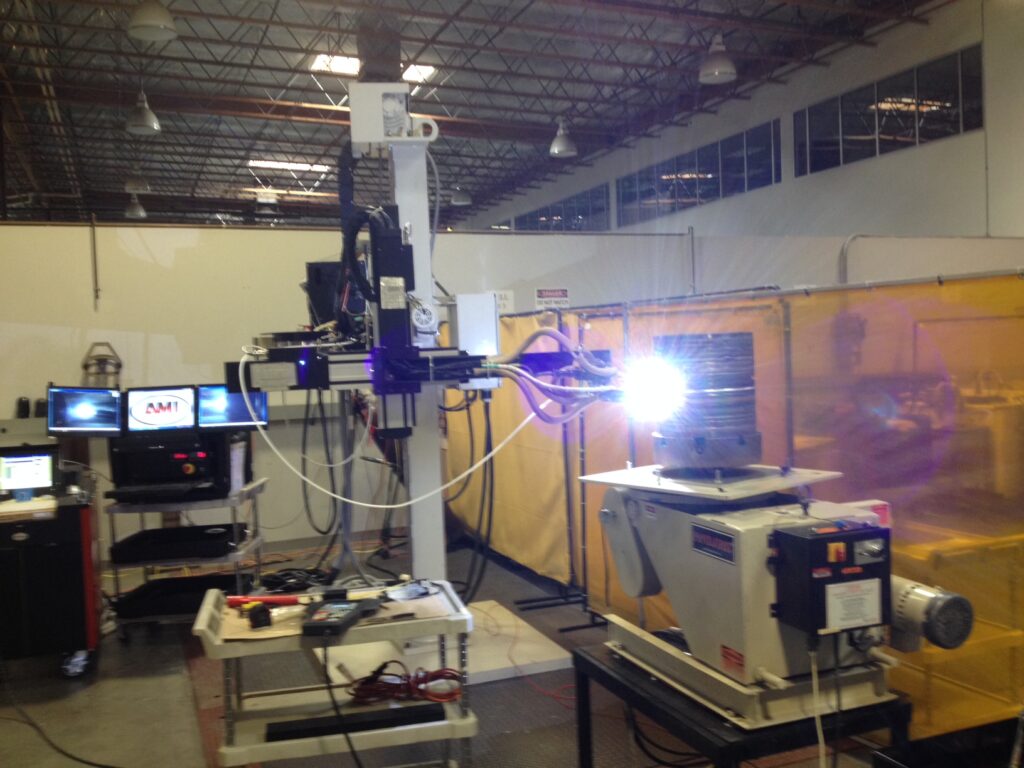
Robotics has been the driving force for automation in the welding industry in recent years. In 2020, the global market size for robotic welding was USD 5.42 billion, and this demand is estimated to grow by 7.7% between 2021 to 2028. This growth indicates manufacturers’ increasing adaptation of robotics to enhance the quality, productivity, and efficiency of their welding process.
The benefits of robotic automation are immense when performing a weld, especially in large-scale industrial projects. However, the efficiency and streamlined output come with a specialized requirement for setting up the welding robots in a safe, confined space. Therefore, let us look at how manufacturers can leverage the advantage of robotic welding cells and integrate their weld equipment to work within this cell for improved cost-efficiency.
Robotic Welding Cells
Robotic welding cells are confined cubicles designed to contain the welding robots so the arms can move freely and navigate around easily without the risk of damaging other components or harming the operators.
The welding cell includes metallic barriers, weld robots, and components required for the robot to operate, such as the torch, power supply, robotic positioners, and other welding fixtures. It will also have arc glare shields, light curtains, laser scanners, and other safety equipment. The advantage of these features of robotic welding cells is that —
- The flexible robotic arm can reach and weld in difficult spaces and complex geometries
- The cell barrier will protect the operators from unwanted glare and splatter
- The cells equipped with proper ventilation hoods efficiently extract the hazardous fumes
- The robotic arm can be extended to move within the well-engineered cell layout, so it does not interfere with other equipment or manual workspaces
In addition to these operational advantages, the increasing adaptation of weld robots and robotic welding cells also means the following —
- The automated weld robot runs at a set speed and process parameters during each pass, producing consistent, uniform, and high-quality results.
- The predictable performance of the robot makes it easy to take on the attainable job and precisely deliver, especially when the demands fluctuate.
- The automated robotic system enhances productivity for manufacturers during the welder shortage.
Weld robots can produce repeatable results at a consistent speed with less waste, unlike manual welding, improving the cost efficiency of the process.
Robotic Welding Cells Layout
The ability to leverage quality weld from robots is directly related to the ability to efficiently layout the robotic welding cells. Therefore, here are some critical design considerations to note.
- The cell should be wide enough to accommodate the largest part size and strong enough to handle the weight of the heaviest workpiece and tools.
- The movement of the robotic arm within the cell can be programmed using offline modeling and simulation tools. Any errors can be easily identified and corrected so that the robot can perform according to the programmed weld sequence.
- The workpiece supply into the robotic welding cell must be streamlined to avoid interfering with the ongoing operation.
Integrating AMI Weld Heads Into the Welding Cells

The weld heads’ versatility lies in their ability to adapt to different welding requirements and solutions. AMI’s wide range of versatile weld heads can accommodate other pipes and tube sizes. The specialty of these weld heads is that they can also be adapted into third-party robotic arms so that manufacturers can get the most cost-effective result.
The integrated robotic welding system with in-built programming software and highly versatile AMI weld heads improve safety, efficiency, and productivity inside the robotic welding cells. The result will continue to improve in the future with further advancements in automation.
Arc Machines, Inc. is a leading provider of a wide range of welding solutions, including weld heads and power supplies. The AMI weld heads are versatile and can integrate with compatible robotic arms to produce consistent and quality weld results within robotic welding cells. For inquiries regarding these and other products, contact sales@arcmachines.com. For service inquiries, contact service@arcmachines.com. Arc Machines welcomes the opportunity to discuss your specific needs. Contact us to arrange a meeting.




